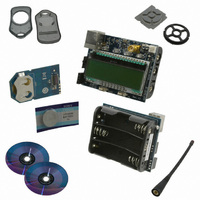4010-DAAKF_434 Silicon Laboratories Inc, 4010-DAAKF_434 Datasheet - Page 12

4010-DAAKF_434
Manufacturer Part Number
4010-DAAKF_434
Description
KIT DEV KEYFOB 434MHZ FOR SI4010
Manufacturer
Silicon Laboratories Inc
Series
EZRadio®r
Type
Key Fobr
Datasheets
1.4010-DAAKF_434.pdf
(2 pages)
2.4010-DAAKF_434.pdf
(14 pages)
3.4010-DKKF_434.pdf
(16 pages)
Specifications of 4010-DAAKF_434
Frequency
434MHz
Wireless Frequency
27 MHz to 960 MHz
Modulation
FSK, OOK
Output Power
10 dBm
Antenna
SMA
For Use With/related Products
Si4010
Lead Free Status / RoHS Status
Lead free / RoHS Compliant
Lead Free Status / RoHS Status
Lead free / RoHS Compliant, Lead free / RoHS Compliant
Other names
336-1981
Si4010-Key Fob-DK
;
;---------------------------------------------------------------------------
;
The function is able to determine whether the device is connected to the IDE chain.
If it is not connected, then the function turns the C2 interface off. Once that is
done it is not possible to turn the C2 interface back on unless the power to the
device, or at least to the digital portion of the device, is cycled. See the
discussion below about advantages and disadvantages.
The following is an example of how to use the vLedOn() function:
/* Clear the GPIO_LED off after reset .. reset will set this bit! */
GPIO_LED = 0;
/* Set LED intensity .. acceptable values are 0 (off) or 1, 2, and 3 */
vSys_LedIntensity( 3 );
/* Turn the LED on at currently set intensity */
vLedOn();
/* Turn the LED off, keep the intensity setting */
GPIO_LED = 0;
Following are the advantages and disadvantages of this solution:
Advantages:
1. Uniform code, no need for conditional compilation, the GPIO4 and LED will function as expected under all
2. The user can use the GPIO_LED=1 in the code, which will block the GPIO4. But subsequent call to
Disadvantages:
1. Once the LED is physically blinked then it is not possible for the IDE to connect to the part until the power is
2. If the part is programmed as the User part with the option to execute the user code after the boot automatically
3. The vLedOn() function code is bigger than simple GPIO_LED=1 and is not necessary for the Run part, so
One recommendation for using the vLedOn() function is that the user application would include monitoring of
12
scenarios.
vLedOn() will clear the blocking of the GPIO4 and it will start functioning normally again.
cycled or the vSys_Shutdown() is called from within the application. It is up to the user to make sure that the
power is cycled.
without stopping, then the user application must not use the vLedOn() function just to blink LED without a user
input. If the application blinks the LED on its own, then the IDE will not be able to connect to the part, since the
C2 interface is disabled at the time when the LED is turned on. If the user does not use the option to execute
user code without stopping after the boot, there is not a problem since the device will load User code after the
reset and wait for further instructions, essentially waiting for the IDE to connect to it without executing the User
code.
conditional compilation for LED bug may still be an option.
…
…
END
Rev. 0.1






